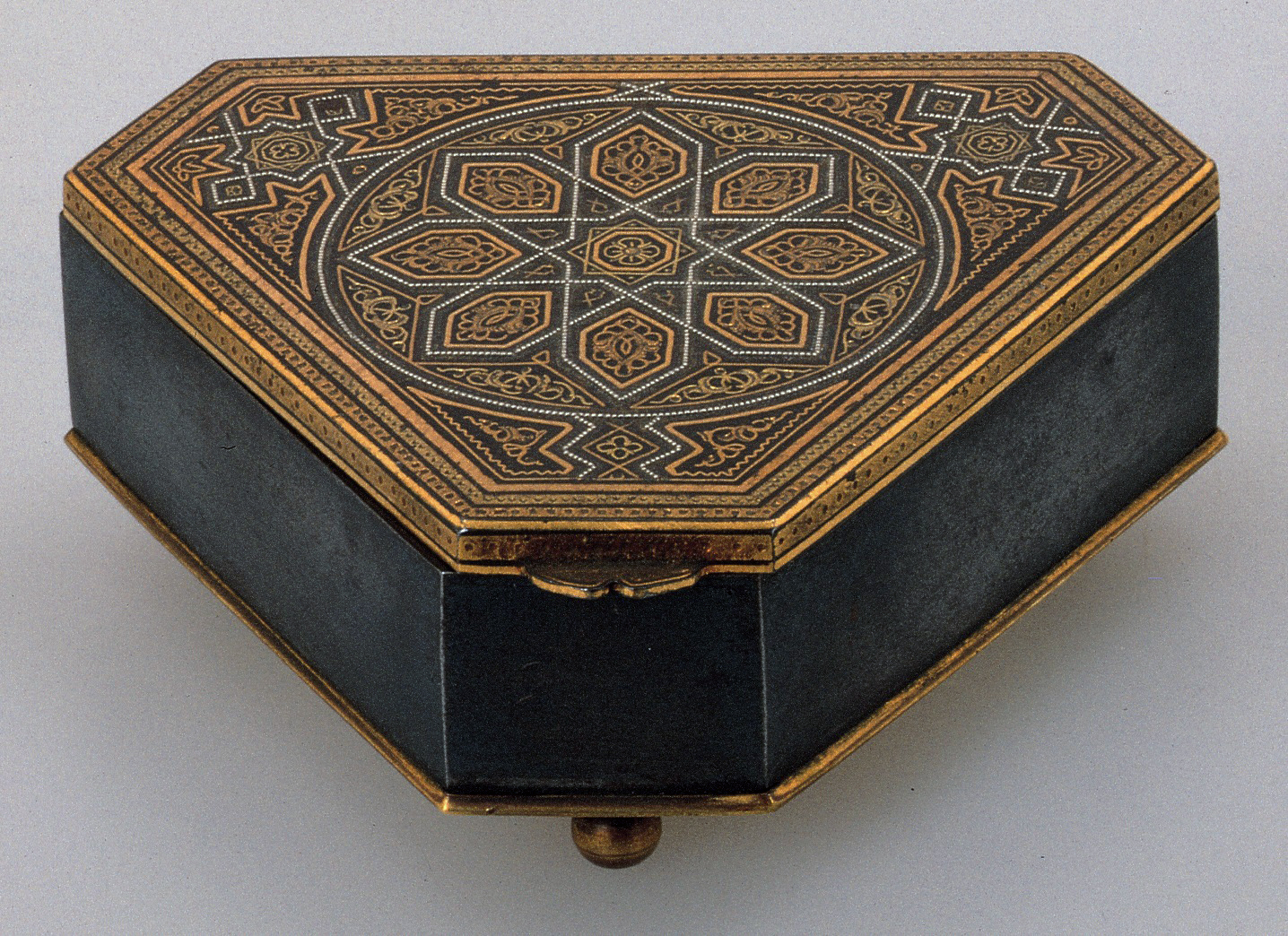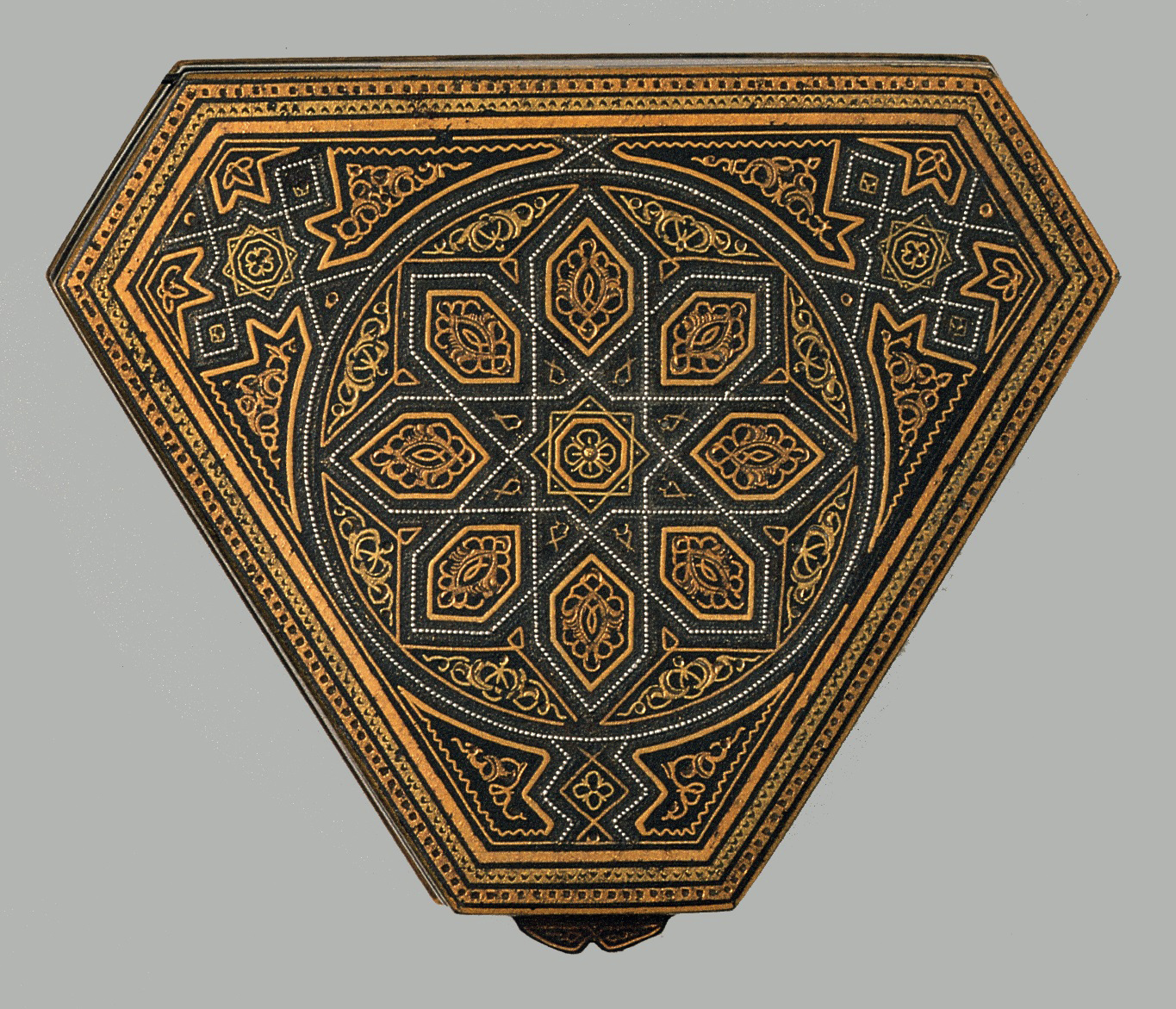 Print Page
Print Page
 Print Page
Print Page
Location: Spain, Eibar
Materials: iron, gold and silver damascene
Dimensions: 3.4 x 9 x 7.4 cm
Accession Number: ZUL 50
Other Notes:
The shape of this box consists of a triangle with truncated angles. The body is of plain blackened iron; the slightly protruding base is gilded along its edges to become a narrow moulding. To the base are attached three gilded spherical feet. The lid, hinged at the rear, has a narrow vertical edge and a slight horizontal projection at its forward end which serves as a handle for opening.
The gold and silver damascene decoration is entirely geometrical, suggesting mudéjar plasterwork or wooden three dimensional artesonado ceiling of a type found in the south. The gold lines and arabesques are executed in two colours; all elements are divided by lines of closely spaced silver beads. The central circle that dominates the composition contains an eight-pointed star within a larger eight-pointed star formed by the crossing of the beaded dividers. Outside this, the points of an even larger eight-pointed star, formed by eight gold hexagons, extend to touch the circumference of the circle. Such ornamentation, based on the central motif of the eight-pointed star, is characteristic of fifteenth-century Spanish mudéjar art and is known as muthamman or ‘composed on eight’. In Eibar the source of this design may well have been postcards of the interior of the Alhambra, which were used extensively for other scenic depictions.
Bibliography:
J. D. Lavin (ed.), The Art and Tradition of the Zuloagas: Spanish Damascene from the Khalili Collection, Oxford 1997, cat. 69, p. 173.

